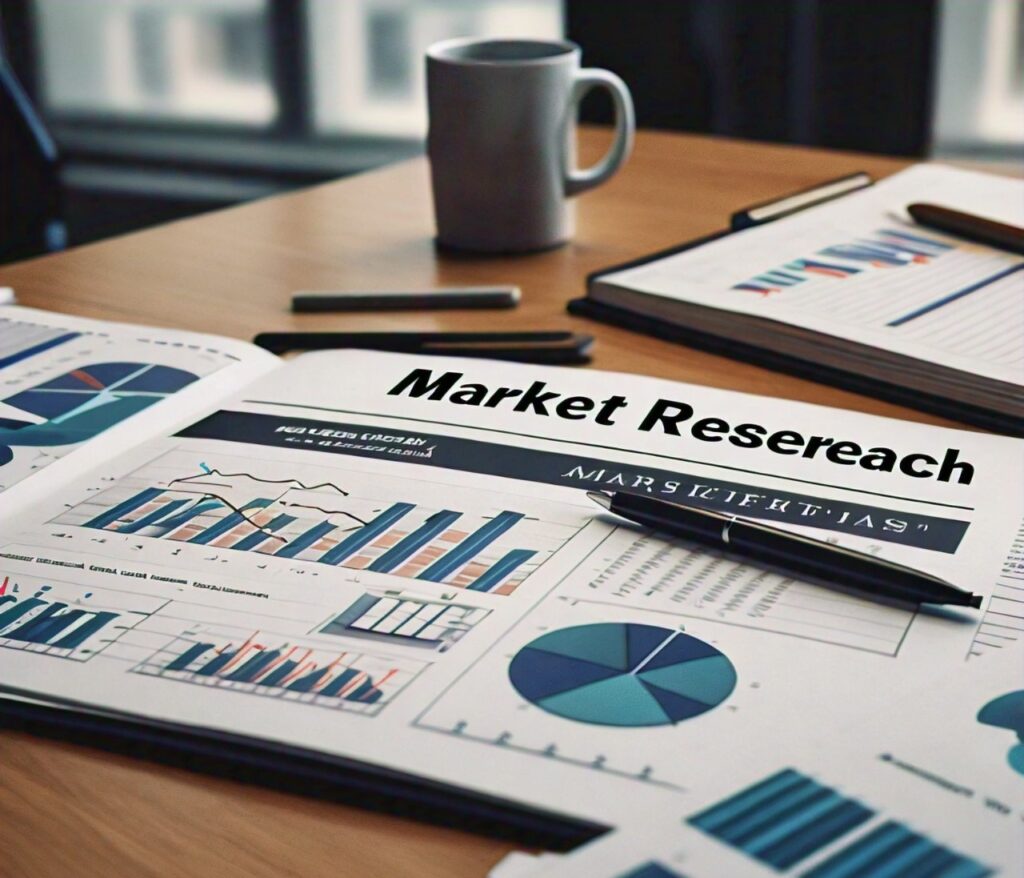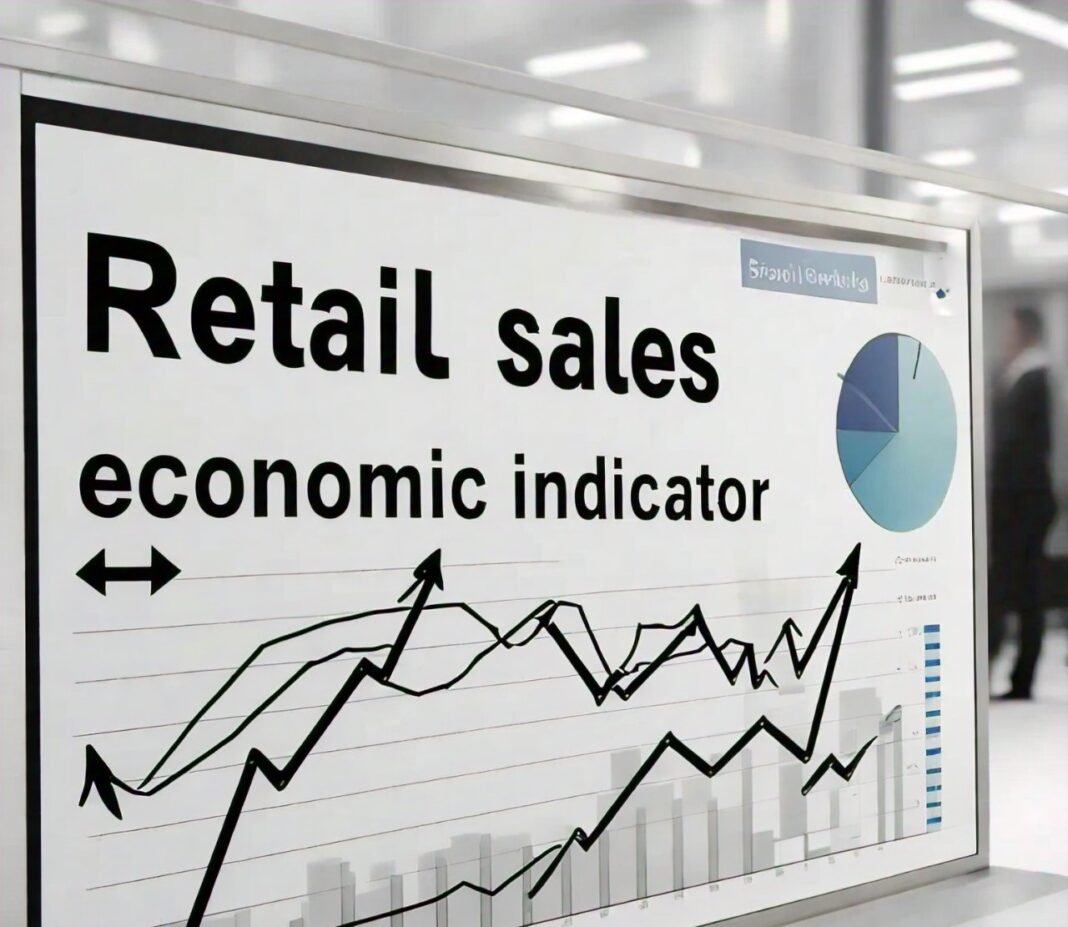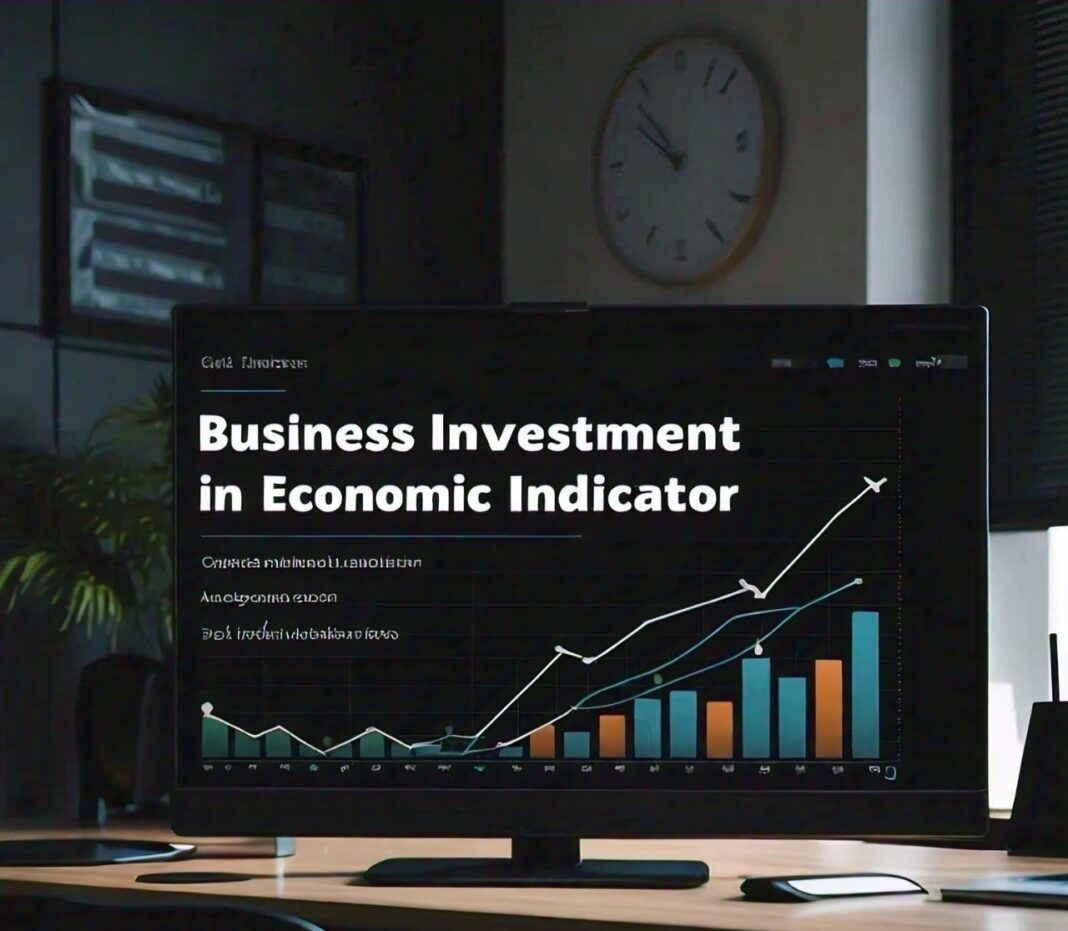In the ever-evolving landscape of retail, staying ahead of market trends is crucial for success. One of the most vital tools for retailers in this pursuit is the Retail Sales Economic Indicator. This metric serves as a barometer of consumer spending habits and overall economic health, providing retailers with invaluable insights into market dynamics.
Retail sales data reflects the total receipts of retail stores and offers a glimpse into consumer behavior, influencing everything from inventory decisions to marketing strategies. By analyzing this indicator, retailers can gauge whether the economy is booming or facing challenges, allowing them to adapt their business strategies accordingly.
Understanding how to effectively utilize the Retail Sales Economic Indicator is essential for forecasting future sales. Retailers can analyze historical data alongside current economic conditions to predict potential growth or decline in consumer spending. This proactive approach not only helps in managing inventory and pricing but also in crafting targeted marketing campaigns that resonate with consumers.
In this article, we will explore the intricacies of the Retail Sales Economic Indicator, delve into methods for analyzing historical and current data, and discuss how retailers can strategically adjust their operations based on these forecasts. By equipping themselves with this knowledge, retailers can navigate the complexities of the market with greater confidence and foresight.
What is the Retail Sales Economic Indicator?
The Retail Sales Economic Indicator is a critical measure that reflects the total sales of retail goods and services in a specified period, usually reported monthly or quarterly. It encompasses a wide range of retail categories, including food and beverage stores, clothing, electronics, and other consumer goods.
This indicator is significant because it provides insights into consumer spending patterns, which account for a substantial portion of economic activity. When consumers are confident and willing to spend, retail sales typically rise, signaling economic growth. Conversely, declining sales can indicate economic challenges, prompting businesses to reevaluate their strategies.

Key Components and Metrics Involved
Total Retail Sales: This is the aggregate of all sales made by retailers over a given period. It includes both durable and non-durable goods.
Month-over-Month Changes: This metric tracks sales fluctuations from one month to the next, helping identify seasonal trends and short-term economic shifts.
Year-over-Year Comparisons: Comparing sales figures from the same month in different years can highlight long-term trends and growth patterns.
Core Retail Sales: This figure excludes categories like automobiles and gasoline, providing a clearer picture of underlying consumer spending trends.
Importance of the Indicator for Retailers
For retailers, understanding this indicator is essential for several reasons:
- Strategic Decision-Making: Retailers can leverage this data to inform inventory management, marketing strategies, and pricing decisions. A spike in sales may indicate the need for increased inventory, while a decline might signal a need to pull back on stock or adjust marketing efforts.
- Consumer Behavior Insights: Analyzing the Retail Sales Economic Indicator allows retailers to gain insights into consumer preferences and behavior. By understanding which categories are performing well, retailers can tailor their product offerings and marketing messages to better align with consumer interests.
- Economic Forecasting: Retailers can use this indicator, along with other economic metrics, to forecast future sales trends. By analyzing historical data in conjunction with current economic conditions, they can make informed predictions about potential growth or decline in consumer spending.
Also Read: The Role of Housing Starts in Economic Forecasting

Importance of Historical Data in Forecasting
Analyzing historical data is a cornerstone for effective sales forecasting in retail. Historical sales figures provide a foundation for understanding trends, patterns, and consumer behavior over time. By examining past performance, retailers can identify cyclical trends, seasonal fluctuations, and potential anomalies that may impact future sales.
Understanding historical data allows retailers to make informed decisions about inventory, marketing, and pricing strategies. For instance, if historical data indicates a consistent increase in sales during a particular season, retailers can prepare by increasing stock levels and initiating targeted marketing campaigns. Conversely, recognizing patterns of decline can help retailers mitigate risks by adjusting their strategies proactively.
Methods for Analyzing Historical Data
To effectively analyze historical sales data, retailers can employ various statistical techniques and tools:
Moving Averages: This method smooths out fluctuations in data to identify longer-term trends. By calculating the average sales over a set period (e.g., three months), retailers can better understand overall performance without the noise of month-to-month variability.
Regression Analysis: This statistical technique helps retailers identify relationships between sales and other variables, such as advertising spend or economic indicators. By understanding these relationships, retailers can make predictions about how changes in one area may impact sales.
Seasonal Analysis: Retailers can analyze sales data to identify seasonal trends. For example, a retail store may consistently see increased sales during holidays. Understanding these trends allows for better inventory and staffing decisions during peak periods.
Year-over-Year Comparisons: Evaluating sales figures against the same period in previous years can help retailers identify growth patterns or declines. This method is particularly useful for understanding how external factors, such as economic downturns or changes in consumer behavior, impact sales.
Tools and Software Commonly Used
Several tools and software solutions can assist retailers in analyzing historical sales data effectively:
- Excel: A widely used tool for data analysis, Excel offers functions for statistical analysis, charting, and pivot tables, enabling retailers to manipulate and visualize their data easily.
- Business Intelligence Software: Tools like Tableau and Power BI allow retailers to create interactive dashboards and visualizations, making it easier to spot trends and generate insights from their sales data.
- Customer Relationship Management (CRM) Systems: Many CRM systems incorporate sales data analysis features, helping retailers track customer interactions and sales performance in one place.
- Dedicated Analytics Platforms: Solutions like Google Analytics provide insights into online sales trends, helping retailers understand consumer behavior in digital environments.
Factors Influencing Current Economic Conditions
Understanding current economic conditions is crucial for retailers looking to forecast future sales accurately. Several key factors can significantly impact consumer spending and, consequently, retail performance:
- Consumer Confidence Index (CCI): This index measures how optimistic or pessimistic consumers are regarding their economic situation. Higher consumer confidence typically correlates with increased spending, while lower confidence may lead to reduced consumer spending. Retailers should monitor CCI trends to gauge potential shifts in purchasing behavior.
- Unemployment Rates: The unemployment rate is a critical indicator of economic health. Higher unemployment typically leads to lower disposable income and reduced consumer spending, while lower unemployment suggests more people have jobs and are likely to spend more on retail goods.
- Inflation Rates: Inflation affects purchasing power and consumer spending habits. When prices rise significantly, consumers may cut back on discretionary spending. Retailers should keep an eye on inflation trends to adjust pricing strategies accordingly.
- Interest Rates: Changes in interest rates can influence consumer borrowing and spending. Lower interest rates may encourage consumers to make larger purchases, such as homes and vehicles, while higher rates can deter spending.
- Economic Growth Indicators: Metrics such as GDP growth rates provide insights into the overall health of the economy. A growing economy generally leads to increased consumer spending, while a contracting economy can signal caution.
Also Read: How Consumer Confidence Indexes Predict Economic Trends
How to Gather Current Economic Data
Retailers can access a wealth of economic data from various reliable sources to stay informed about current conditions:
- Government Reports: Agencies like the U.S. Bureau of Economic Analysis (BEA) and the U.S. Bureau of Labor Statistics (BLS) publish regular reports on economic indicators, including GDP, unemployment rates, and consumer spending trends. These reports provide a comprehensive overview of the economic landscape.
- Economic Research Organizations: Institutions such as the National Bureau of Economic Research (NBER) and the Conference Board offer analysis and insights into current economic conditions, including consumer confidence and retail sales performance.
- Market Research Firms: Companies like Nielsen and IHS Markit provide valuable market insights and consumer behavior analysis, helping retailers understand the nuances of current economic conditions.
- News Outlets and Financial Publications: Reputable financial news outlets such as Bloomberg, CNBC, and The Wall Street Journal regularly report on economic trends and their implications for various sectors, including retail.

Interpreting the Retail Sales Economic Indicator
Reading the Indicator
Interpreting the Retail Sales Economic Indicator involves analyzing its fluctuations and trends to derive actionable insights for forecasting and strategic planning. Here’s how retailers can effectively read and understand the data:
Trend Analysis: Retailers should look for both short-term and long-term trends in the indicator. For example, a consistent upward trend over several months may indicate a robust economy and increased consumer spending, while a downward trend could signal economic contraction. Retailers can use line graphs to visualize these trends over time.
Seasonal Adjustments: It’s essential to consider seasonal adjustments when interpreting the indicator. Retail sales often experience seasonal fluctuations due to holidays and shopping seasons. Understanding these patterns helps retailers differentiate between normal seasonal variations and actual changes in consumer behavior.
Comparative Analysis: Comparing current retail sales figures against historical data (e.g., year-over-year comparisons) can provide context. If sales are trending upward compared to the same month last year, it may indicate positive growth, whereas a decline might suggest emerging challenges.
Benchmarking: Retailers can benchmark their sales performance against industry averages or key competitors. This comparison helps assess whether their sales performance aligns with broader market trends or if they are outperforming or underperforming relative to peers.
Identifying Potential Growth or Decline Signals
Retailers can use the Retail Sales Economic Indicator to identify potential growth or decline signals by observing specific patterns:
- Rapid Sales Increases: A sudden spike in sales may indicate a favorable economic environment or successful marketing strategies. Retailers should investigate the cause of the spike—such as successful promotions or new product launches—and consider how to replicate it.
- Consistent Declines: A prolonged decline in sales may signal underlying issues, such as shifts in consumer preferences, increased competition, or broader economic challenges. Retailers should conduct further analysis to identify the root causes and develop strategies to address them.
- Consumer Sentiment Correlation: Correlating sales data with consumer sentiment indicators, such as the Consumer Confidence Index, can provide deeper insights. For example, if sales are declining while consumer confidence is also low, it reinforces the notion of economic challenges affecting consumer spending.
Adjusting Strategies Based on Forecasts
Inventory Management
Effective inventory management is crucial for retailers seeking to optimize their operations based on forecasts derived from the Retail Sales Economic Indicator. Here are some strategies retailers can employ:
Just-in-Time Inventory: This approach involves keeping inventory levels low and ordering stock only as needed. By aligning inventory with forecasted sales trends, retailers can reduce holding costs while ensuring they meet consumer demand. For instance, if sales forecasts predict a spike during the holiday season, retailers can increase orders just before peak shopping periods.
Safety Stock Calculations: Retailers should calculate safety stock levels based on historical sales data and predicted demand fluctuations. This buffer inventory ensures that they can meet unexpected increases in demand without overstocking. For example, if past trends indicate a 20% increase in sales during a specific period, retailers can adjust their safety stock accordingly.
Demand Forecasting Tools: Utilizing advanced forecasting tools and software can help retailers analyze data more effectively. Tools like Microsoft Dynamics 365 and SAP Integrated Business Planning allow retailers to incorporate historical sales data, current trends, and market insights to refine their inventory strategies.
Pricing Strategies
Retailers can also adjust their pricing strategies based on insights gleaned from the Retail Sales Economic Indicator:
Dynamic Pricing: This strategy involves adjusting prices in response to changing market conditions and consumer demand. For example, if the indicator shows an increase in consumer spending, retailers may raise prices slightly to maximize profits. Conversely, if sales are projected to decline, they might implement discounts or promotions to stimulate demand.
Promotional Strategies: Retailers should develop promotions aligned with forecasted sales trends. For instance, if historical data suggests a dip in sales during certain months, targeted promotions, such as flash sales or loyalty rewards, can help drive foot traffic and boost sales.
Competitive Pricing Analysis: Regularly analyzing competitors’ pricing strategies in conjunction with retail sales data can provide insights into market positioning. If competitors lower prices during a downturn, retailers may need to adjust their pricing to remain competitive.
Also Read: How Commodity Prices Serve as Economic Indicator
Marketing Strategies
Tailoring marketing efforts based on sales forecasts is essential for maximizing reach and effectiveness:
Targeted Campaigns: Using insights from the Retail Sales Economic Indicator, retailers can create targeted marketing campaigns that resonate with current consumer sentiments. For instance, if forecasts indicate a rise in discretionary spending, retailers might promote higher-end products or luxury items.
Seasonal Marketing Adjustments: Retailers should align their marketing strategies with seasonal sales trends. If historical data shows increased sales during back-to-school season, for example, they can ramp up marketing efforts in late summer, featuring promotions that appeal to parents and students.
Digital Marketing Optimization: Leveraging digital marketing channels allows retailers to adjust their strategies quickly based on real-time data. Utilizing platforms such as Google Ads or social media advertising enables retailers to target specific demographics and adjust campaigns based on sales forecasts.

Challenges and Limitations
Potential Challenges in Forecasting
While the Retail Sales Economic Indicator is a valuable tool for retailers, several challenges and limitations can impact its effectiveness in forecasting future sales. Understanding these challenges is crucial for retailers to refine their strategies and improve their forecasting accuracy.
- Data Reliability and Accuracy: The quality of the data used in the Retail Sales Economic Indicator is paramount. Inaccurate or outdated data can lead to misleading forecasts. Retailers must ensure they are using reliable sources and regularly updated information to inform their analyses.
- Economic Unpredictability: The retail environment is influenced by numerous external factors, including economic downturns, political instability, and global events (e.g., pandemics). These unpredictable elements can drastically alter consumer behavior and spending patterns, making it difficult for retailers to rely solely on historical data for future predictions.
- Consumer Behavior Variability: Consumer preferences can shift rapidly due to trends, cultural changes, or technological advancements. Retailers face the challenge of adapting to these changes quickly. For example, the rise of sustainability concerns has led some consumers to favor eco-friendly products, which may not be reflected in traditional sales data.
- Seasonal Fluctuations: Retail sales often exhibit pronounced seasonal patterns, which can complicate forecasting. While historical data can provide insights into these patterns, unexpected weather events or changes in consumer habits can disrupt typical seasonal trends, leading to inaccurate predictions.
- Competition and Market Dynamics: The competitive landscape can change rapidly, affecting sales performance. New entrants into the market, changes in pricing strategies by competitors, and shifts in consumer loyalty can all impact sales figures, making it challenging to forecast accurately.
Mitigating Risks
To navigate these challenges, retailers can adopt several strategies to enhance their forecasting efforts:
Diversified Data Sources: Retailers should utilize a combination of data sources, including sales data, economic indicators, consumer sentiment surveys, and social media trends. This diversified approach provides a more comprehensive view of the market and helps mitigate the risks associated with relying on a single data source.
Agile Forecasting Models: Implementing agile forecasting models that can adapt to changing conditions allows retailers to respond quickly to new information. Techniques such as scenario planning can help retailers prepare for various potential outcomes, enhancing their ability to pivot as needed.
Continuous Monitoring: Retailers should establish a process for continuously monitoring key performance indicators (KPIs) and external factors that influence sales. Regularly reviewing data and adjusting forecasts based on real-time information can improve accuracy.
Collaboration and Communication: Encouraging collaboration between different departments—such as marketing, sales, and supply chain—can help retailers align their strategies. Open communication ensures that all teams are aware of market conditions and can work together to adjust forecasts and strategies accordingly.
Conclusion
In today’s dynamic retail environment, understanding and effectively utilizing the Retail Sales Economic Indicator is crucial for success. This article has explored the various dimensions of this indicator, emphasizing its importance in forecasting future sales trends and informing strategic decisions for retailers.
Retailers are encouraged to leverage the insights gained from the Retail Sales Economic Indicator to enhance their forecasting processes and strategic planning. By adopting a data-driven approach and continuously monitoring market conditions, retailers can better navigate the complexities of the retail landscape and position themselves for long-term success.
For more resources on retail strategies and economic insights, consider exploring McKinsey & Company or Harvard Business Review, which provide more case studies focused on retail management and economic analysis.






